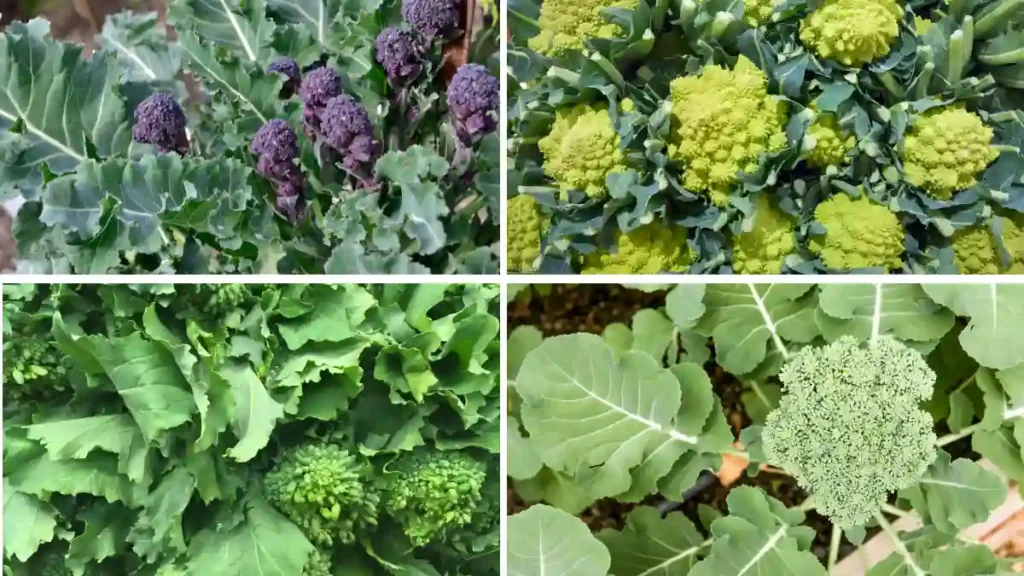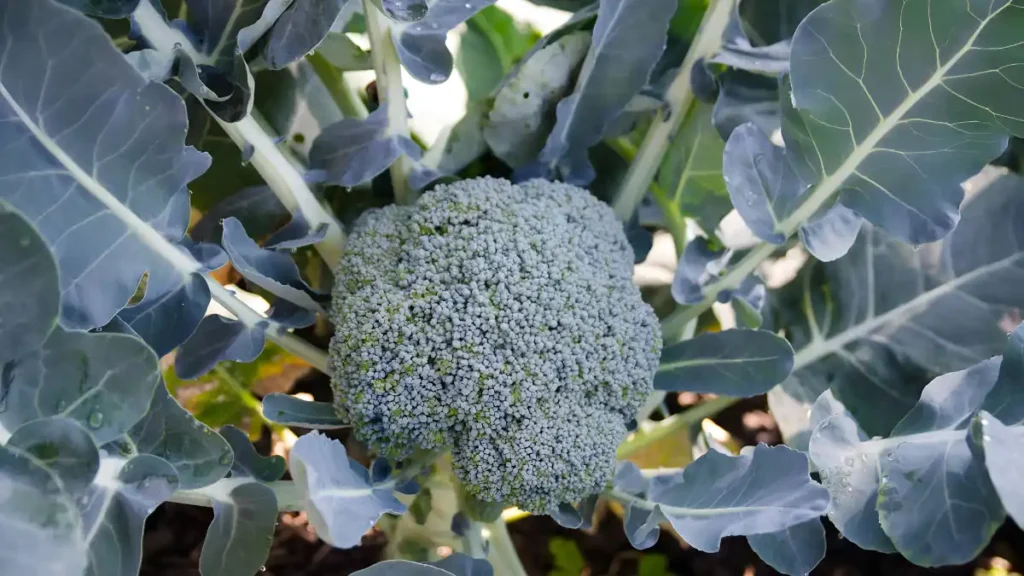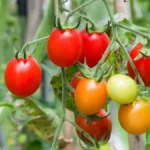One green vegetable that is a member of the Brassica family is broccoli. Broccoli comes in dozens of varieties, with hues ranging from green to purple to white. The flavors and sizes of the stalks, leaves, and florets vary between the numerous varieties of broccoli. Additional health benefits of broccoli include its ability to strengthen the immune system and enhance digestion. Broccoli is a native of the Mediterranean and has been farmed for more than 2,000 years. And also you can grow broccoli in containers at home. Learn about the different types of broccoli by reading this article.
Types of broccoli to grow:
An energizing topic! There are various broccoli varieties, each with special qualities and tastes. Here are a few typical variants.
Chinese Broccoli:
- The Chinese broccoli plant varieties, commonly referred to as Chinese kale, are distinguished by their thick stems and enormous leaves. It features large green leaves, long green stalks, and small florets that are almost noticeable beneath the large leaves. As the name implies, Chinese food frequently features this broccoli. Both calcium and folate are essential for healthy bones and DNA synthesis, while Chinese broccoli contains twice the fiber of calabrese broccoli.
Purple Sprouting Broccoli:
- This kind has earthy, slightly sweet taste buds that are deep purple. Broccoli sprouts in a variety of hues, but purple is probably the most exciting. While the stems and leaves have a little sweeter flavor than the florets, the entire plant is edible. Anthocyanins, which are antioxidants, are responsible for the purple hue. Take note that broccoli sprouts, which are young broccoli plants resembling alfalfa sprouts, are not the same as sprouting broccoli.
Romanesco Broccoli:
- The distinctive geometric heads of Romanesco broccoli types make them easily identifiable. Other varieties of sprouting broccoli taste a lot like Romanesco broccoli. It is one of the most visually appealing vegetables, with a light green tint. Like a kaleidoscope of colorful vegetables, the florets are spiky spirals. Romanesco broccoli, originally from Italy, is now available in the United States. In terms of flavor, Romanesco broccoli has a nutty, somewhat sweet taste. Roasted in olive oil and sprinkled with Parmesan cheese, it tastes great.
Calabrese Broccoli:
- The broccoli you bought at the grocery store was likely Calabrese broccoli. It is the most commonly accessible variety, with big, compact buds and a subtle flavor. It’s delicious whichever way you prepare it or serve it raw. Broccoli contains plant chemicals called isothiocyanates and quercetin, which function as antioxidants to help prevent inflammation. Moreover, the heart, eyes, immune system, metabolism, digestion, and bones are all supported by the calcium, fiber, vitamin E, and antioxidants found in broccoli.

Broccolini:
- Chinese and normal broccoli are crossed to produce broccolini. When it’s grilled, its mildly sweet, earthy flavor comes through. According to research, this vegetable is a fantastic source of carotenoids, which are phytochemicals that function as antioxidants in the body. This indicates that they aid in the fight against oxidative stress, which is connected to several diseases, cancer, and chronic inflammation. Therefore, avoid boiling and instead use cooking techniques like sautéing, griddling, steaming, grilling, etc. if you want to balance flavor and nutrients.
Broccoli Rabe
- Broccoli rabe belongs to the family Turnip. It is an Italian cultivar that tastes more intensely bitter and has a softer texture. Compared to broccolini, broccoli rabe has significantly larger leaves, smaller florets, and slender stems. It is commonly sautéed with garlic in Italian cooking. This vegetable provides a good source of potassium, vitamin C, vitamin A, and folate, among other vitamins and minerals.
Waltham Broccoli:
- Waltham Broccoli is a well-liked broccoli cultivar that has blue undertones in the heads, soft stems, and big, tight buds. It is a cool-season crop, meaning that it grows best in the milder spring or fall weather. It can also withstand light frosts and keep its buds from falling off after one. Waltham broccoli should be planted in full sun and well-draining soil if you want to grow it. In addition to tasting great, it is a great source of fiber, vitamin C, and vitamin K.
Blue Wind Broccoli:
- The term “Blue Wind” refers to a hybrid variety of broccoli that has a tinge of blue in its leaves and heads. It’s a kind of sprouting broccoli distinguished by its tasty, soft stems and vivid blue-green buds. Although specific studies on the health benefits of this variety of broccoli are lacking, it does include fiber, antioxidants, vitamins, and minerals that are all generally associated with health advantages, just like other varieties of broccoli. It thrives best in the milder spring or fall weather. For gardeners who like to have a consistent supply of fresh broccoli, this is an excellent option.
Conclusion:
In conclusion, broccoli comes in many forms, each with special qualities, benefits, and applications. The above list includes some well-liked types. Flavor, texture, and growing conditions should all be considered when selecting broccoli varieties. Try different types to see what works best for your climate and cooking style. Types of broccoli are mentioned above.
Certainly! If you’d like to learn more, please consider following our WhatsApp Channel: Harvest Gardening
A frequently asked questions:
Q1. How many different types of broccoli are there?
A1. There are various varieties of broccoli, such as purple cauliflower, sprouting broccoli, and Calabrese broccoli.
Q2. Which types of broccoli grow too easily?
A2. Here are some broccoli varieties that are easy to grow they are Waltham Broccoli, Belstar broccoli, etc.
Q3. Can dogs eat all types of broccoli?
A3. Sure, as long as they consume it in moderation, dogs may eat any kind of broccoli. because if used in excess, it can be hazardous.




1 Comment
Pingback: How to Grow Broccoli in Containers at Home: A Beginner's Guide